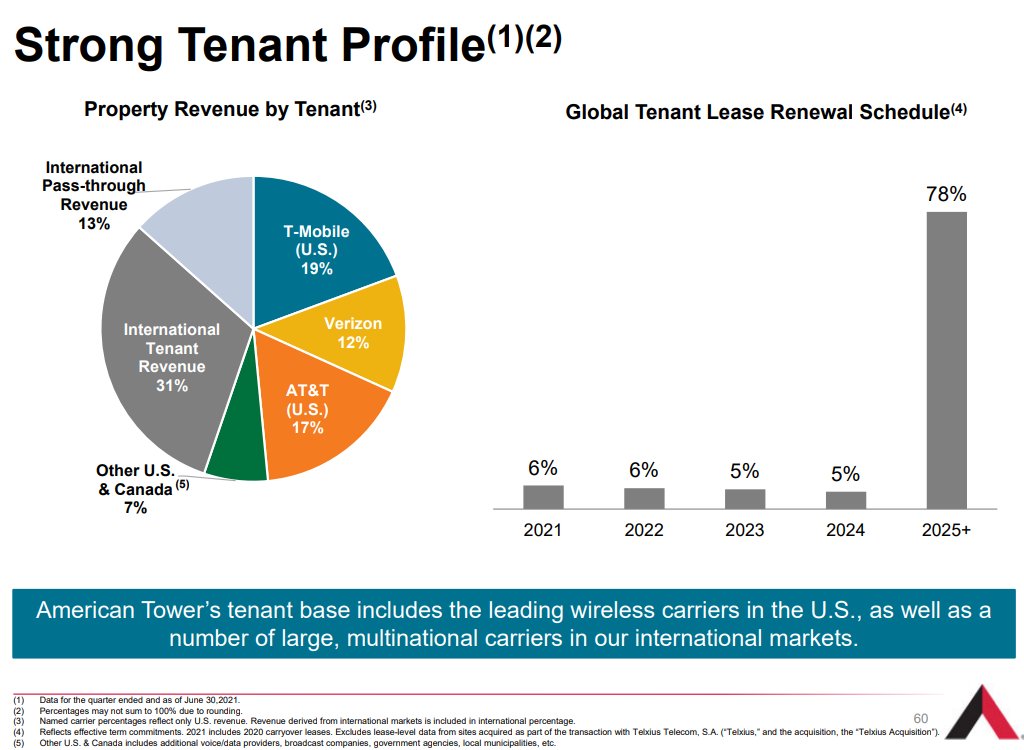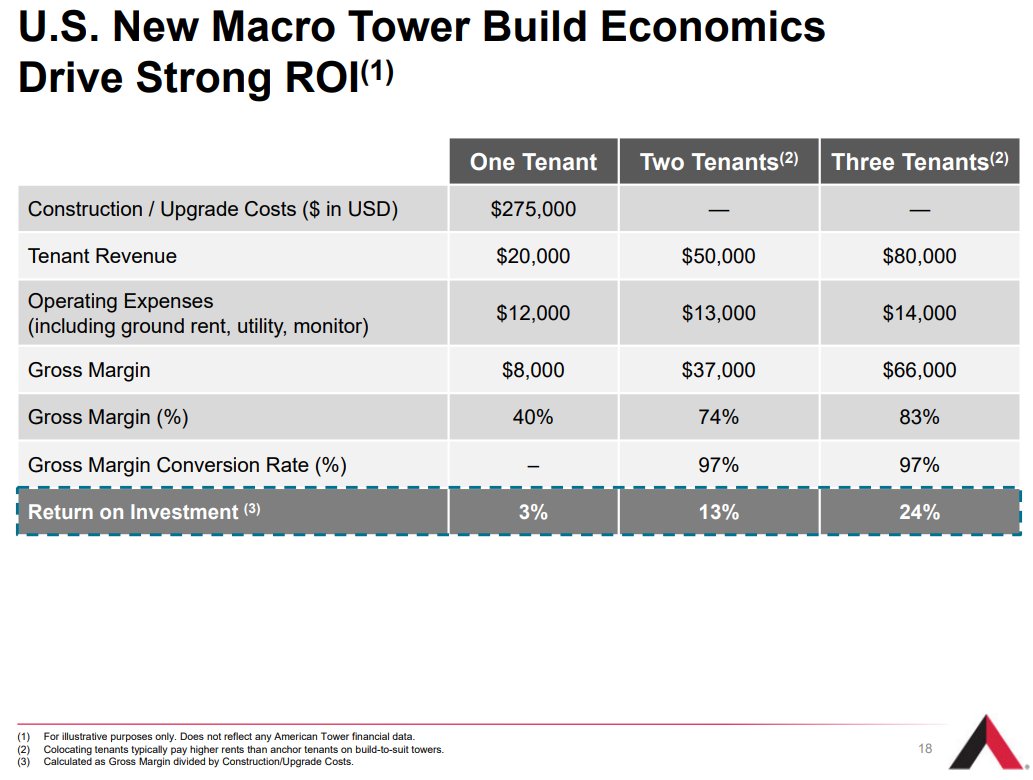
#CotD #3 - American Tower
Operating 214k cell towers (43k US + Canada), $AMT is the world's largest tower owner. Its revenue has grown w/ mobile data usage. As this trend persists, & w/ 5G on the horizon, AMT may grow for years to come, like other $BYTE Index members.
1/x🧵👇👇

Operating 214k cell towers (43k US + Canada), $AMT is the world's largest tower owner. Its revenue has grown w/ mobile data usage. As this trend persists, & w/ 5G on the horizon, AMT may grow for years to come, like other $BYTE Index members.
1/x🧵👇👇


$AMT exhibits:
• Global scale
• Stable growth
• Durable, strong cash flow
• Levered capital returns
These attractive features, coupled with secular growth trends around mobile data consumption, have helped drive a 22% CAGR over the past ten years!! (7.3x your $)
2/
• Global scale
• Stable growth
• Durable, strong cash flow
• Levered capital returns
These attractive features, coupled with secular growth trends around mobile data consumption, have helped drive a 22% CAGR over the past ten years!! (7.3x your $)
2/

Secular growth trends remain.
Recent organic rev growth has been mid-single digits and AFFO (cash flow) closer to 10%.
Rev. is primarily from LONG-term leases w/ huge mobile cos (eg, AT&T). These have inflation escalators and only a modest portion face renewal risk each yr.
3/

Recent organic rev growth has been mid-single digits and AFFO (cash flow) closer to 10%.
Rev. is primarily from LONG-term leases w/ huge mobile cos (eg, AT&T). These have inflation escalators and only a modest portion face renewal risk each yr.
3/


Zoning new towers is NIMBY-hard, often turning towers into local monopolies.
A given tower often holds multiple tenants ($VZ + AT&T + T-Mo), with each additional tenant providing highly incremental cash flow.
The examples below illustrate the economics of additional tenants:
4/


A given tower often holds multiple tenants ($VZ + AT&T + T-Mo), with each additional tenant providing highly incremental cash flow.
The examples below illustrate the economics of additional tenants:
4/



This game is won by owning hard-to-replace towers and leasing them up - real estate 101. (HT: @moseskagan)
4G + increasing data consumption drove the last 15 years.
5G and the Internet of Everything will drive the next 15 years.
5/
4G + increasing data consumption drove the last 15 years.
5G and the Internet of Everything will drive the next 15 years.
5/

5G is just starting - it is a massive opportunity for tower operators, as each time a new antenna is hung on a tower, it requires a contract modification with the tower owner ($AMT).
5G also requires fiber, which benefits many other $AMT / $BYTE-style digital infra companies.
6/
5G also requires fiber, which benefits many other $AMT / $BYTE-style digital infra companies.
6/

5G is not just "faster mobile internet". It is a ubiquitous, high throughput, low latency, edge internet. A future filled with full self-driving mode Teslas, robotics, and the metaverse.
Deploying 5G will take a decade or more, pushing tower and fiberco growth alongside it.
7/

Deploying 5G will take a decade or more, pushing tower and fiberco growth alongside it.
7/


$AMT's AFFO growth has been strong and persistent, enabling capital allocation flexibility.
Capital allocation starts with organic tower new-builds. As it has grown, and new build opps moderated, M&A has been a big tool. AMT's dividend has CAGR'd at 19%!! for the past 5 yrs.
8/

Capital allocation starts with organic tower new-builds. As it has grown, and new build opps moderated, M&A has been a big tool. AMT's dividend has CAGR'd at 19%!! for the past 5 yrs.
8/


All cos have plenty of risks, including $AMT:
- Consolidation among MNOs (eg, T-Mo acquiring Sprint)
- Technological obsolescence (what if we don't need towers?)
- A levered business
- Reliance on regulatory/zoning protections
etc.
9/
- Consolidation among MNOs (eg, T-Mo acquiring Sprint)
- Technological obsolescence (what if we don't need towers?)
- A levered business
- Reliance on regulatory/zoning protections
etc.
9/
But like many digital infrastructure businesses, it has shown incredible predictability and resilience, allowing for inflation+ pricing, recurring revenue, & attractive margins.
$AMT's ROIC has been stable over many yrs &, as its cost of capital has declined, cash flow is up.
8/
$AMT's ROIC has been stable over many yrs &, as its cost of capital has declined, cash flow is up.
8/

Note: I never intend Tweets as investment advice. This is meant as a basic, high-level overview of what $AMT does and how one might begin to look at the business.
-End-
Please Like, Follow, & RT if you find these useful:
3 down, 2 to go! 🤸♀️🤸♂️
-End-
Please Like, Follow, & RT if you find these useful:
3 down, 2 to go! 🤸♀️🤸♂️
https://twitter.com/compound248/status/1453731224267026439
• • •
Missing some Tweet in this thread? You can try to
force a refresh

















